Mixing bass guitar is an important part of audio engineering, as it provides the foundation of the song.
A well-mixed bass guitar can enhance the overall sound and impact of a track, but it can be a challenging task for many producers and engineers.
In this blog post, we will discuss some tips and techniques for mixing bass guitar, including EQ, compression, level balancing, saturation, and more.
How to Mix Bass Guitar
Give yourself the gift of no longer dreading your mixing or getting overwhelmed when it's time to process the bass.
Finally, master the art of producing a well-balanced low end every time, no matter the genre.
Get it Right From the Source
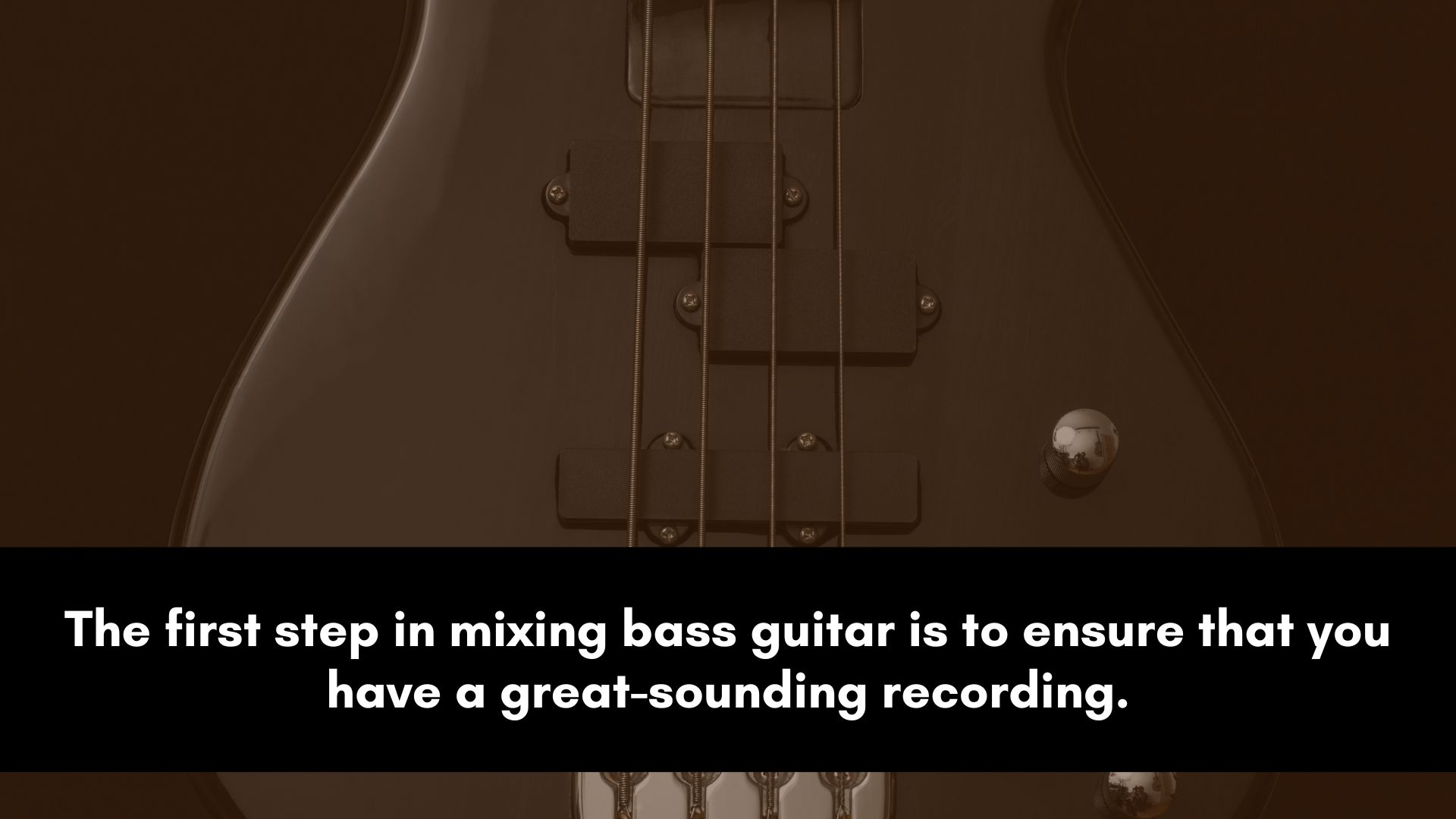
The first step in mixing bass guitar is to ensure that you have a great-sounding recording.
This means that the bass guitar should be recorded cleanly with a minimum of background noise if you’re using microphones.
It’s crucial to test different mic placement techniques and try different microphones until you find the sound you’re going for.
A direct recording is usually preferred over a mic'd recording, as it provides a more consistent sound that can be easily processed.
If you're using samples, make sure they complement the rest of the instrumentation, especially the kick.
Don’t choose a sample that will clash with the kick, thinking you’ll fix it in the mix. That’s not going to happen; instead, this will compromise the quality of your mixes.
The same thing applies if you’re designing your own bass guitar sound using a synthesizer or VST instruments.
The goal is to always get the right sound straight from the source.
Don’t take shortcuts!
Listen to the Bass Track in Context
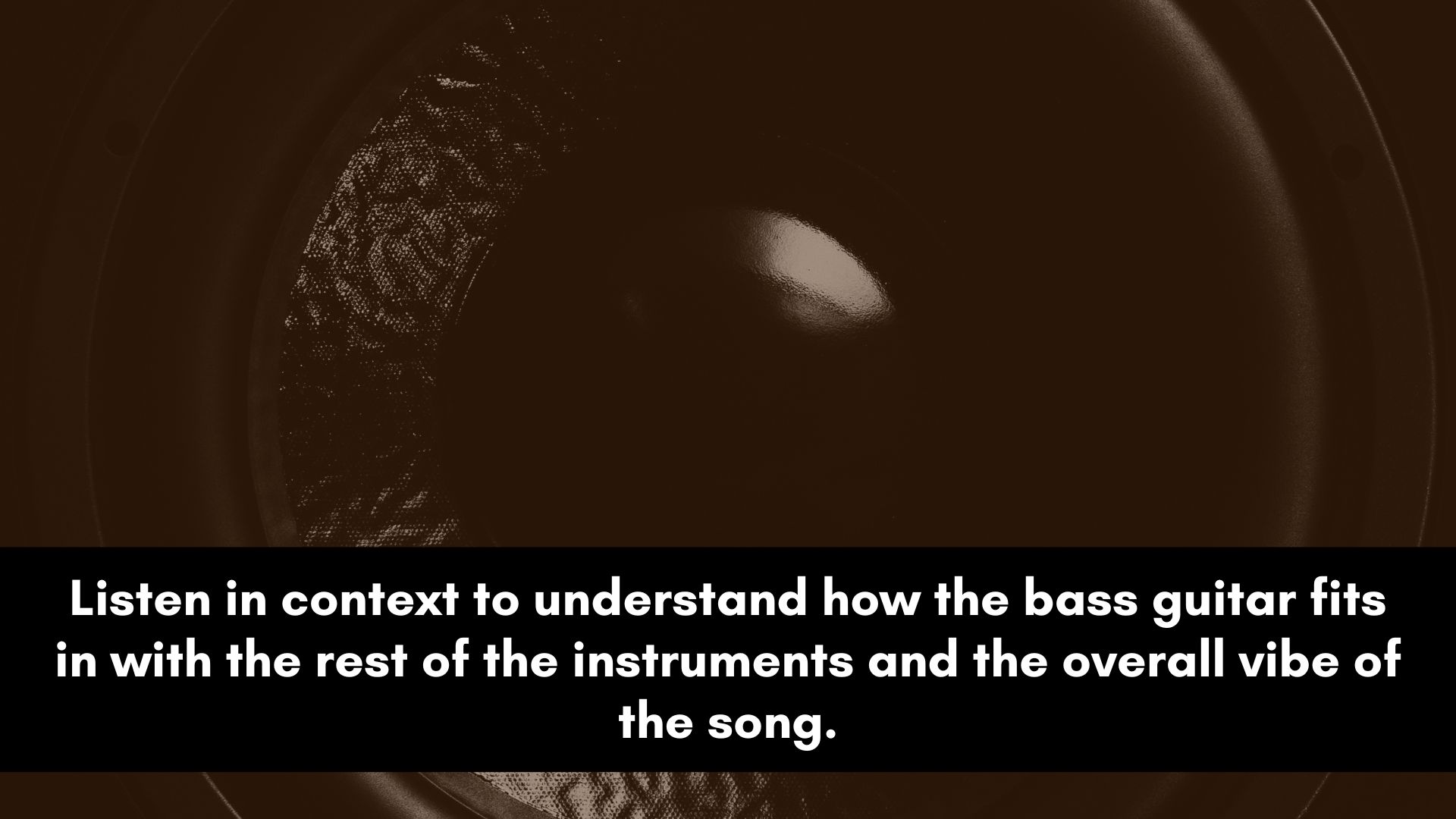
Before jumping straight into mixing, it's important to listen to everything in context.
This will help you understand how the bass guitar fits in with the rest of the instruments and the overall vibe of the song.
Figure out which sounds should be punchy and which ones need to be smooth.
You can't have a punchy kick and a punchy bass at the same time.
This will create clutter and mud on the low end. One has to be smooth while the other is punchy to create contrast in the mix.
Also, consider the genre and style of music you're working with, as different genres may require different approaches to mixing the bass guitar.
Level Balancing

The level of the bass guitar in the mix is crucial. It needs to be loud enough to be heard but not so loud that it overpowers the other low-end instruments.
Start by determining which instrument should dominate the low end between kick and bass.
Do the same if you have other low end sounds such as 808, floor tom, cajon, etc.
You can’t have everything upfront. Some instruments have to be in the background to have good balance, depth, and contrast.
It should be easy for the listener to tell which sound is driving the low end; they shouldn’t be guessing.
You can then adjust the levels of all the instruments to create a well-balanced low end.
Feel free to use reference songs that are in the same genre to reduce guesswork, especially if you’re not familiar with that particular style of music.
Equalizing the Bass Guitar
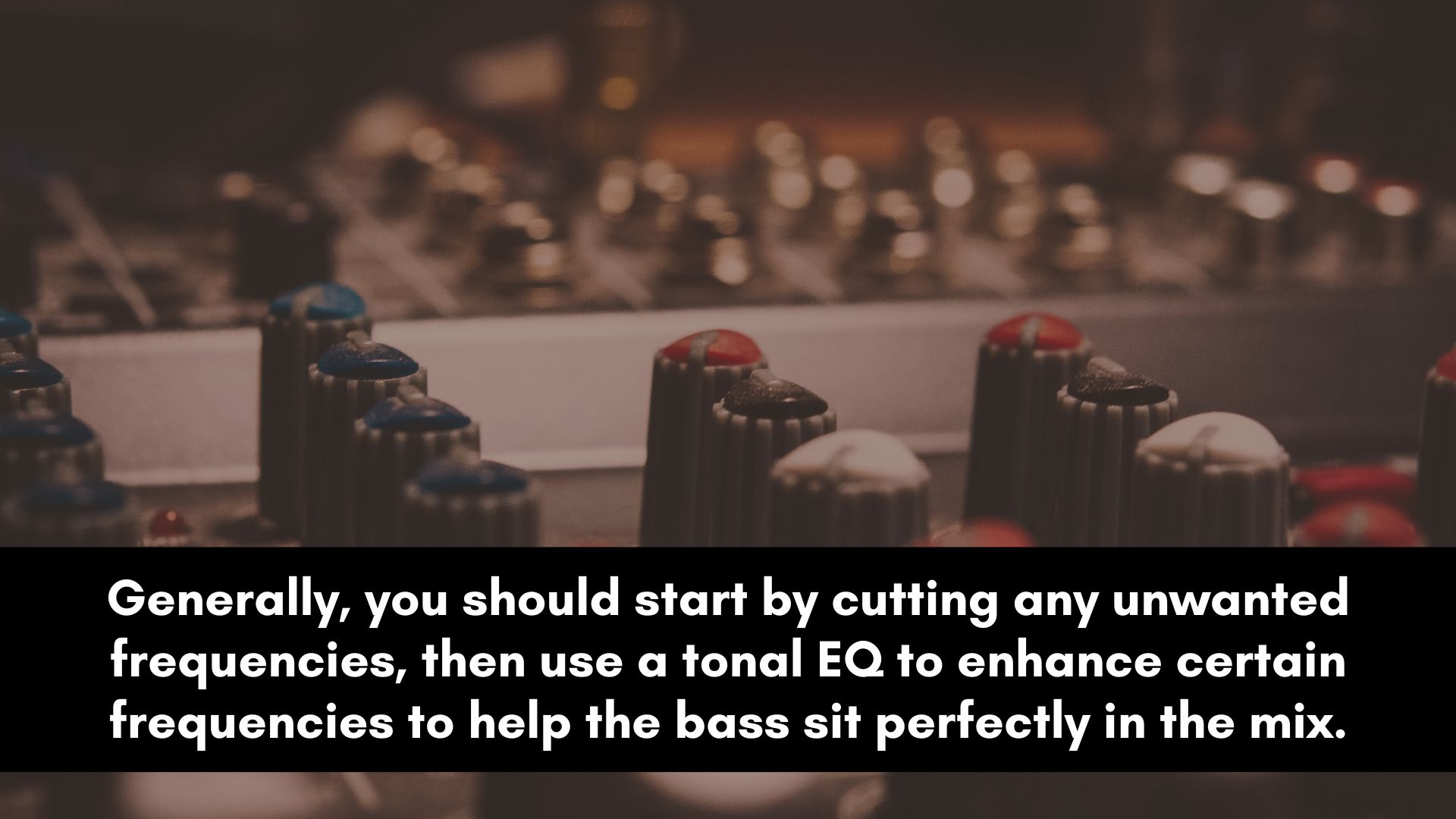
Equalization is an important tool for shaping the sound of the bass guitar.
Generally, you should often start by cutting any unwanted frequencies, then use a tonal EQ to enhance certain frequencies to help the bass sit perfectly in the mix.
If you chose or recorded low-end sounds that complement each other, this process should be simple because you already know which frequencies dominate on the bass.
I’ve written a complete guide about this; it’s called “How To EQ Bass Guitar” and it also includes an EQ cheat sheet.
Check it out for a more detailed explanation.
Compress to Impress
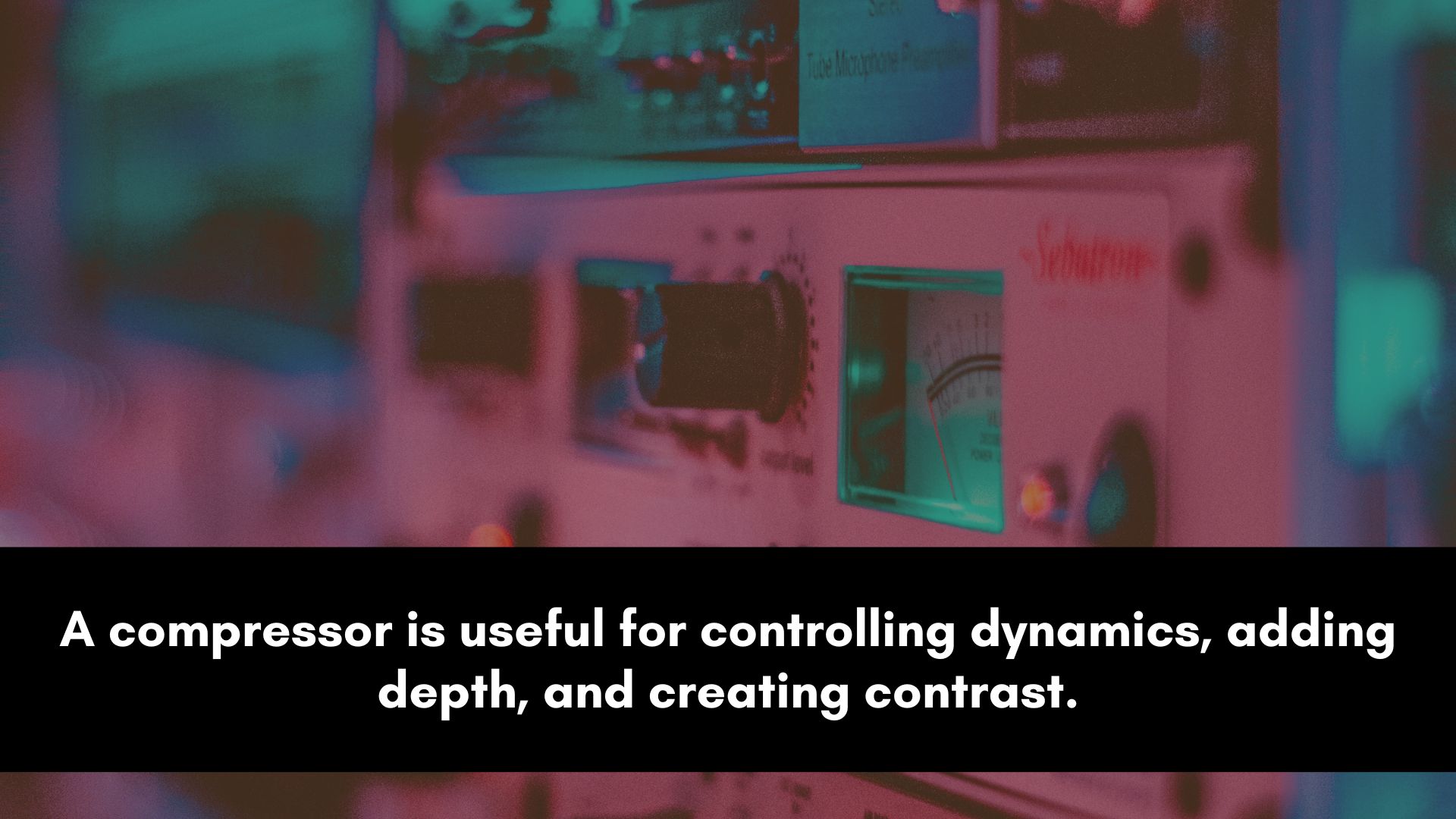
Compression is another crucial part of mixing bass guitar.
A compressor is useful for controlling dynamics, adding depth, and creating contrast.
You can use aggressive compression if you want to push the bass behind the other low-end instruments.
If you want the bass to be upfront, then apply a small amount of compression just to control the dynamics without over-controlling them.
Check out my previous post, “Bass Compression,” for a complete guide and a list of commonly asked questions.
Stereo Imaging
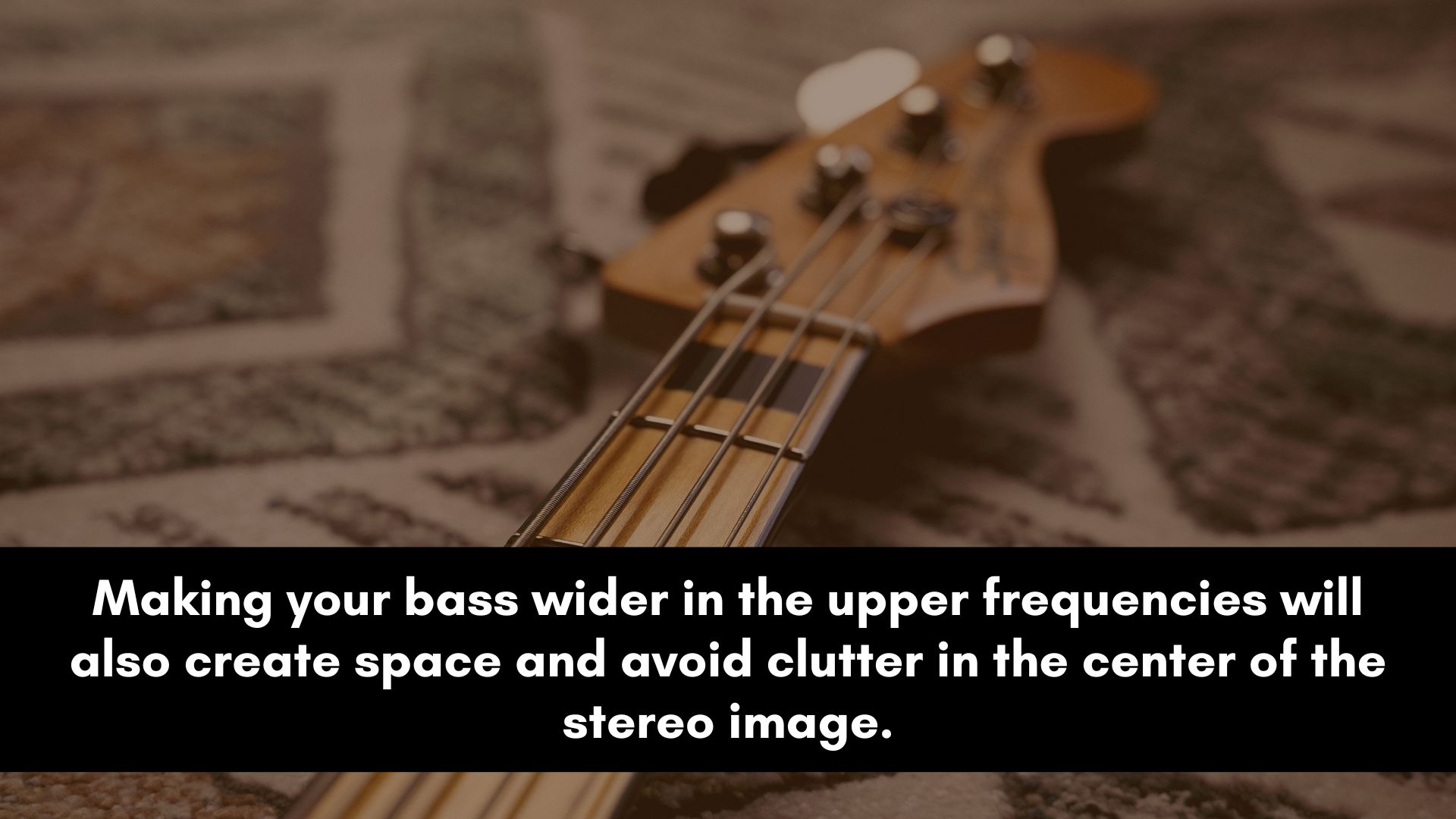
Stereo imaging is an optional but powerful tool for mixing bass guitar.
This is where a multiband stereo imaging tool comes in handy. The goal is to make the upper frequencies wider while keeping everything below 150 Hz mono.
This will make the bass sound more expansive and dynamic. Keeping the low end mono ensures that the bass translates well on different sound devices.
Be careful not to overdo it, as too much stereo widening can make the bass guitar sound unnatural.
Too much can also cause phase issues.
Making your bass wider in the upper frequencies will also create space and avoid clutter in the center of the stereo image.
Adding Harmonic Content
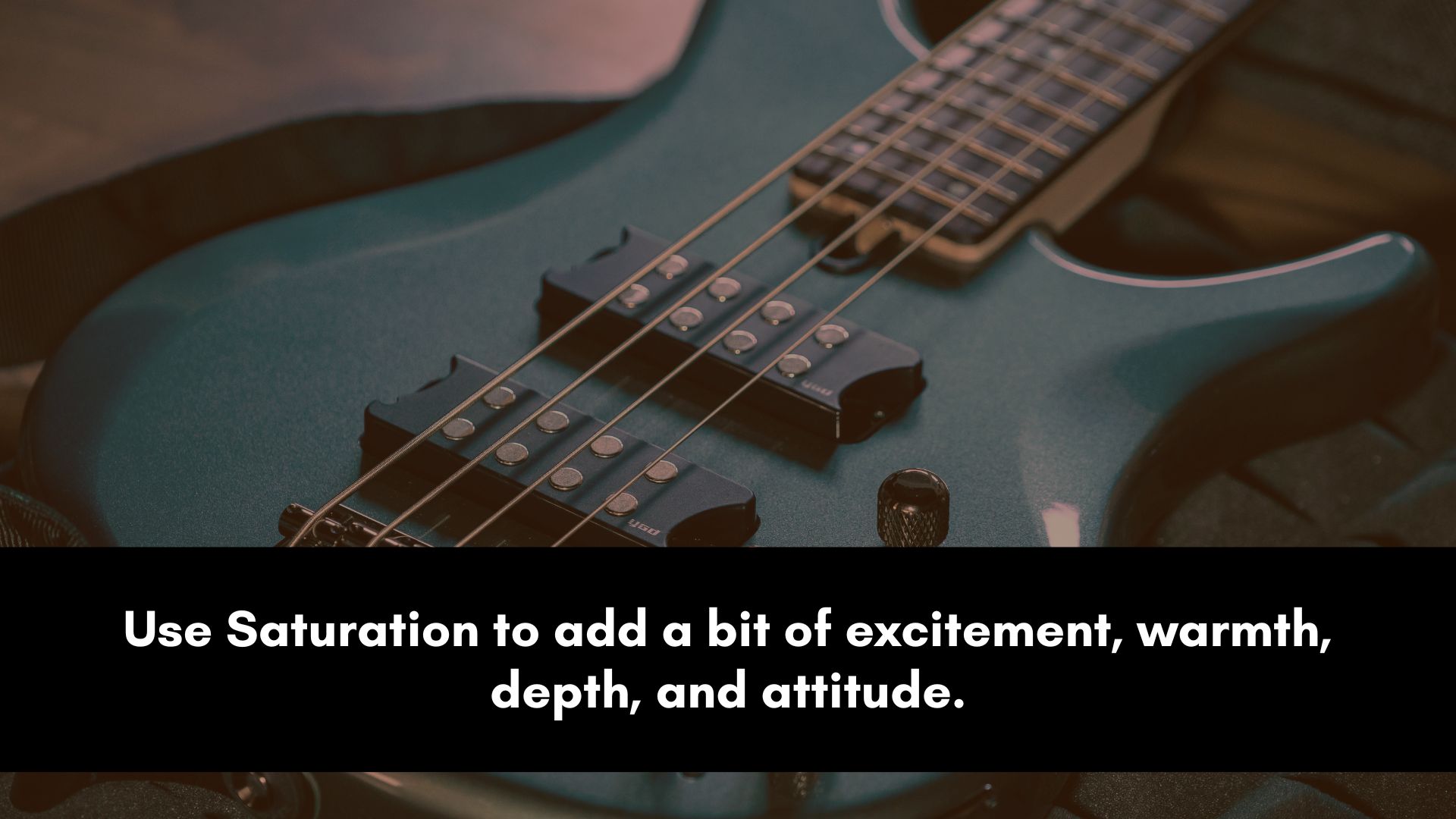
Saturation can also play an important role in making sure that the bass sits perfectly in the mix.
These days, a lot of recordings don’t go through analog gear, so it may sound way too digital and clean.
That can be boring. So, to add a bit of excitement, warmth, depth, and attitude, we use saturation plugins.
This is really useful if you want to fix a thin bass. Saturation can make it sound fuller and warmer without making it sound muddy.
Saturation can also help the bass cut through and become audible on small speakers (laptops, smartphones, bluetooth speakers, AirPods, etc.).
You can learn more about this in my previous post, “How To Mix Bass For Small Speakers.”
Mixing Kick & Bass
I’ve written a dedicated post about this topic.
Check out “How To Mix Kick and Bass” for the complete guide.
The tutorial covers different scenarios to help you get the perfect low end you hear on your favorite songs, not to mention the mistakes you need to avoid.
So go check it out to create a well-balanced and powerful bass guitar sound that enhances the overall impact of your music.
Best Distortion Plugins for Bass
Choosing the right distortion plugin is a crucial step in making sure that you get the best sound when mixing a bass guitar.
Not all plugins are created equal. Some are designed to add warmth, while others are great for making things cut through.
Check out my post called “My 8 Favorite Bass Distortion Plugins” to learn more.
Commonly Asked Questions About Mixing Bass Guitar
It would be a crime to wrap up this guide without answering some frequently asked questions about how to mix bass guitar.
If you have any further questions, please leave them in the comments section, and I will respond as soon as possible.
Should Bass Guitar Be Panned in The Mix?
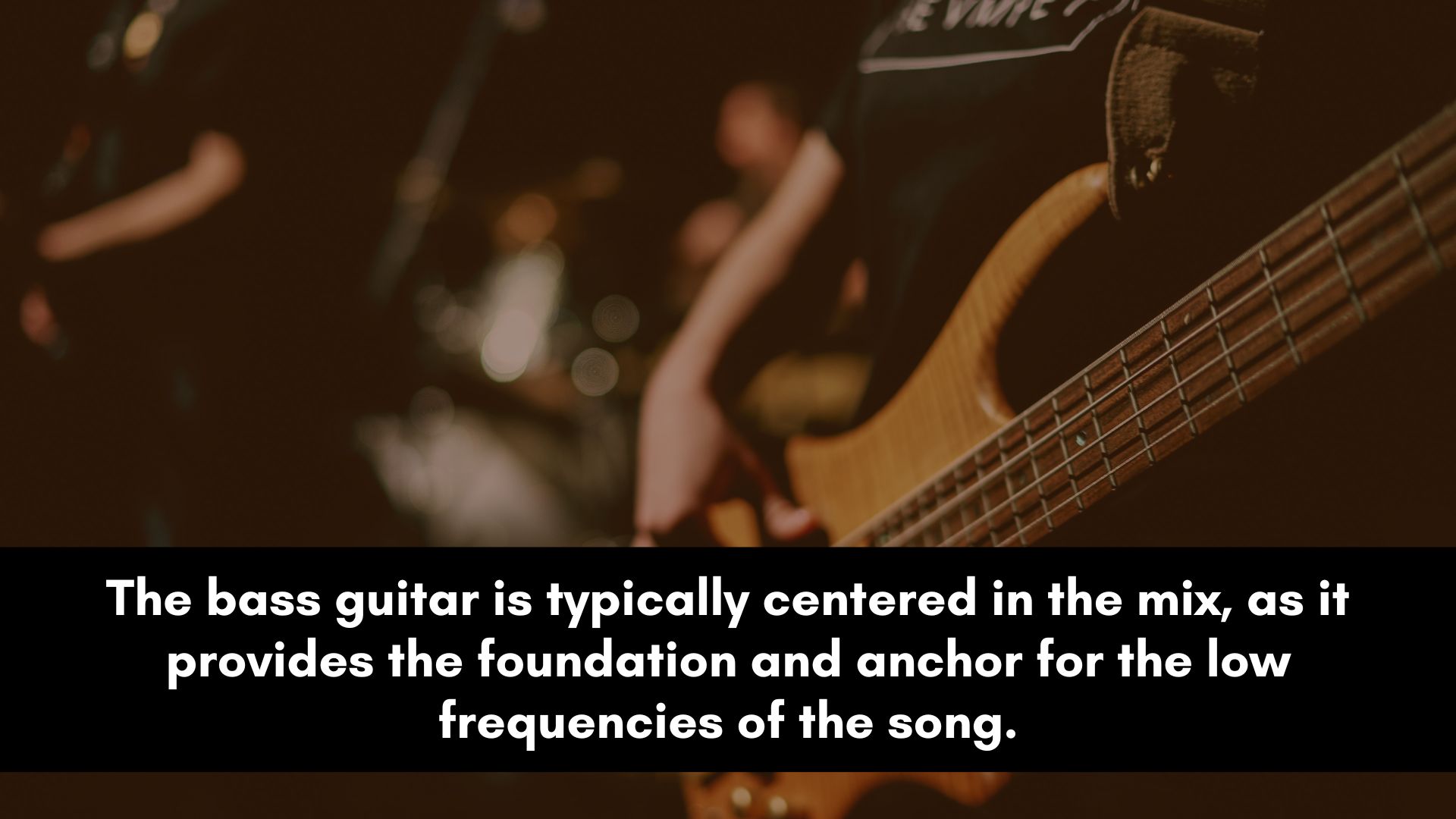
The bass guitar is typically centered in the mix, as it provides the foundation and anchor for the low frequencies of the song.
Panning the bass will cause the low frequencies to become weak or unbalanced.
One thing to keep in mind is that frequency waves are much longer as they get lower, sometimes as long as the room, making it harder to determine the direction of the sound.
Panning the bass will also make it hard for it to translate well when played on different sound systems.
You might be able to hear it in your studio, but it will fall flat when played on other devices.
If you’re mixing for vinyl, then it’s a must to keep it mono because making it stereo will cause the needle to skip.
Even if you’re mixing multiple bass sounds, there’s no need to pan them left and right; all you need to do is make one wide and keep the other narrow.
This should create separation and avoid any masking or frequency overlap.
Should I Mix Bass in Mono or Stereo?
In general, it is best to mix the bass guitar in mono.
This is because the bass guitar is a low-frequency instrument, and low-frequency information tends to be mono in most playback systems.
Mixing the bass in stereo can cause issues with phase cancellation and may result in a weaker or less defined low end.
However, there may be certain situations where using stereo processing on the bass can be beneficial.
For example, using a stereo widening effect on the higher frequency harmonics of the bass guitar can help to create a sense of space and depth in the mix.
Also, if the song has multiple bass instruments, such as a synth bass and a live bass guitar, making them stereo and widening them (a little bit) can help to create separation and clarity in the low end.
It is important to note that any stereo processing on the bass should be used sparingly and with care, as it can easily cause phase issues or an unbalanced low end.
It is also a good idea to check the mix in mono to ensure that the low end is still balanced and solid.
So, the decision to mix the bass in mono or stereo should be based on the specific needs of the song and the mixing engineer's personal preference and experience.
I should also mention that there is nothing wrong with a stereo bass as long as it translates perfectly when played in different playback systems.
How to Make the Bass Punchy in a Mix?
There are various techniques that you can use to make a bass sound punchy in a mix.
The most obvious way is to use a compressor with a slow attack, low ratio, and soft knee. But there are other ways such as EQ, saturation, etc.
Here are a couple of techniques that you can use to get a punchy bass sound:
Use Compression: Start with a low ratio, a slow attack, and a medium release time, and adjust the threshold to taste. This should increase the attack and result in a punchy sound.
EQ: Use EQ to enhance the punchy frequencies of the bass guitar. Boosting the upper midrange frequencies between 1 kHz and 4 kHz can help bring out the attack and definition of the bass, making it more punchy and cutting through the mix.
Saturation or Harmonic Enhancement: Use saturation or harmonic enhancement plugins (R-Bass, VOG, etc.) to add harmonic content to the bass guitar and enhance its punch and presence in the mix.
Be careful not to overdo it, as this can quickly result in a distorted or muddy sound.
Use High Pass Filters: Use high pass filters on other tracks in the mix to create space for the bass guitar in the low-frequency range.
This will prevent other instruments from clashing with the bass guitar and allow it to stand out more in the mix.
Making the bass punchy comes down to finding the right balance between EQ, compression, and other processing to enhance the attack while keeping the natural characteristics of the bass intact.
Why is Bass So Hard to Mix?
Bass can be difficult to mix because it occupies a large part of the low-frequency spectrum, which can easily become muddy or overpowering if not properly balanced.
The bass and kick drum are typically the foundation of the rhythm section, and any imbalance or inconsistency in their levels can affect the overall feel and groove of the song.
The biggest issue that makes it hard to mix bass is when you’re working with sounds that don’t compliment each other.
This is why it’s crucial to choose samples or record low-end instruments that work well together and apply mixing techniques to enhance the sounds instead of fixing poor sound design or recording issues.
Here are some specific reasons why bass can be challenging to mix:
Conflicting Frequencies: The low frequencies of the bass guitar can often conflict with other instruments in the mix, such as the kick, 808, floor tom, timbale, etc., which also occupy the low-frequency range.
These conflicts can cause the mix to become muddy or unclear, making it difficult to hear individual instruments.
Inconsistent Levels: Low-end instrument parts can have varying levels of intensity throughout a song, making it difficult to maintain a consistent balance between them and the other instruments in the mix.
This inconsistency can cause the mix to sound unbalanced or lack cohesion.
Listening Environment: Many studios and listening environments do not have the proper acoustics to accurately represent the low frequencies of a mix.
This can make it difficult to properly hear and balance the bass in the mix.
Playback Systems: Many consumer playback systems, such as headphones or small speakers, do not accurately reproduce the low frequencies of a mix.
That ususally makes it difficult to judge the balance and impact of the bass in a mix on these systems.
In order to properly mix bass, it is important to have a well-tuned listening environment and accurate monitoring systems.
Proper EQ and compression techniques can help to balance the bass with the rest of the mix, while still maintaining its impact and power.
With experience and careful attention to detail, mixing bass can become less challenging and more intuitive.
